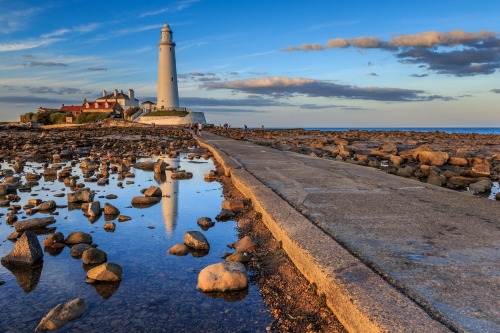Sledmere House
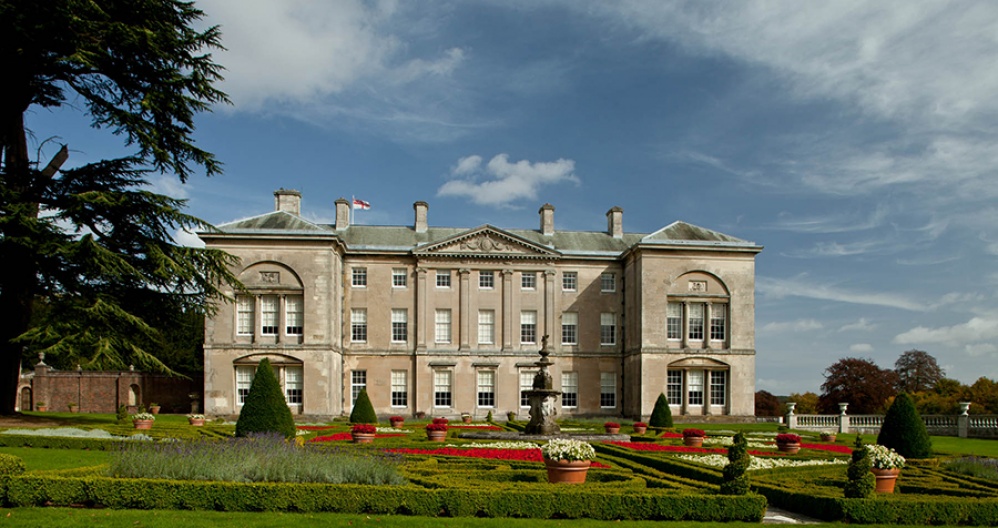
We continue our series on Yorkshire's stately and historic homes with a portrait of Sledmere House, one of the brightest jewels in the crown of the Yorkshire Wolds
Compared with the lush majesty of the Yorkshire Dales and the atmospheric beauty of the Yorkshire Moors, the Wolds can pale into insignificance. But there are some unheralded and undiscovered gems in the Wolds – and the village of Sledmere, nestling in their fertile uplands and dominated by Sledmere House, is one of them.
Sledmere is a village of design, not accident. It is an estate village which was built to support the magnificent 18th century Sledmere House, which is owned by the Sykes family, and it is they who have created and shaped this very special place. There had been a manor house at Sledmere from medieval times, when wolves used to roam the forbidding countryside, but this fascinating story really starts in 1748, when the Sykes family first moved to Sledmere.
The Sykes family were a rich mercantile and banking family from Hull, who were looking to expand their interests inland into rural East Yorkshire. They inherited the Sledmere estate through their relationship with the equally wealthy Kirkby family, and Richard Sykes, an energetic and far-sighted man, began work immediately to transform Sledmere into the superb stately home that it is today.
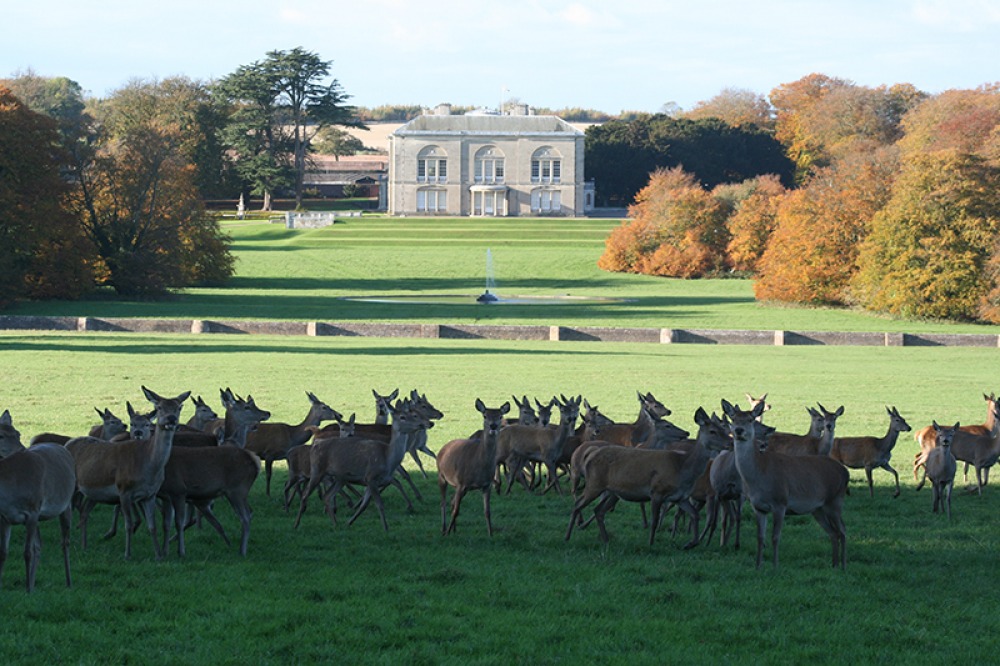
An entry in Richard’s diary states: ‘June 17, 1751: laid the first stone of the new house at Sledmere.’ He had demolished the old house completely and no trace of it can be found today, save for some ancient brickwork in the cellars. Built in brick with heavy stone facings, its architecture looks back to the Queen Anne era rather than forward to the great Georgian age. It is, however, a magnificent sight and Richard’s successors, including his brother Mark who was made the first Sykes Baronet in 1783 in recognition of his pioneering agricultural work in the Wolds, have all contributed to the graceful evolution of Sledmere House and village. Famous landscape gardeners such as Capability Brown, interior designers and plasterers like Joseph Rose and architects like John Carr and Walter Brierley have also been involved, with outstanding results. At its peak in the 19th century, the Sledmere estate comprised 34,000 acres and the family were the largest landowners in the East Riding. Today it has shrunk somewhat, but still consists of 8,750 acres.
The Sykes family itself features an array of colourful and eccentric aristocrats, striding through the ages like the cast of an extravagant costume drama. One of the most extraordinary was Sir Tatton ‘Tat’ Sykes, the 4th Baronet, said to be one of the great sights of Yorkshire in his prime, who sold a copy of the Gutenberg Bible to support his foxhounds and racing stables, and who wore 18th century dress until the day he died, aged 91, in 1863. Among other attributes, he was a first-class bare-fisted boxer and amateur jockey, who rode down to London from Sledmere in his eighties.
Sir Tat’s son, also named Tatton, was similarly eccentric in his dress, wearing eight coats at the same time, and discarding them throughout the day in order to keep his body temperature constant. The 5th Baronet didn’t marry until he was 48 – and then disastrously, having chosen a beautiful, but wayward, 18-year-old bride called Jessie Cavendish-Bentinck. Jessie, known as Lady Satin Tights, reportedly took a string of lovers, ran up massive debts and almost, but not quite, brought ruin on Sledmere and the Sykes. As if that wasn’t enough for Sir Tatton, disaster struck in 1911, when fire raged through the house and reduced it to ashes and rubble. Rumour has it that Sir Tatton refused to leave his burning house until he had finished his pudding. Whatever the truth of this somewhat scurrilous tale, the house was beautifully restored by Sir Tatton’s son Mark, before Mark died suddenly from a virulent strain of Spanish flu while helping to broker peace at the Paris Conference after the First World War in 1919. He was only 40.
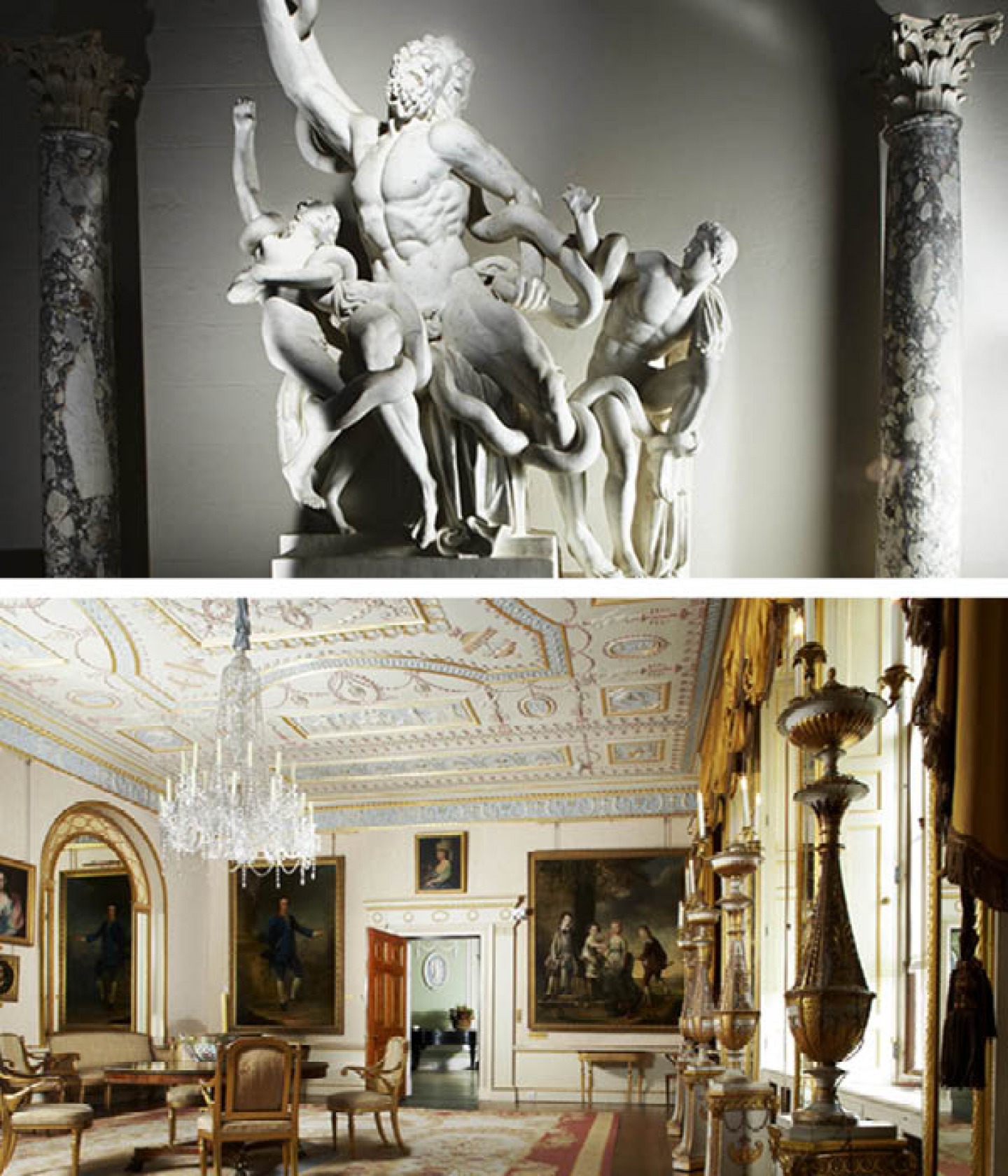
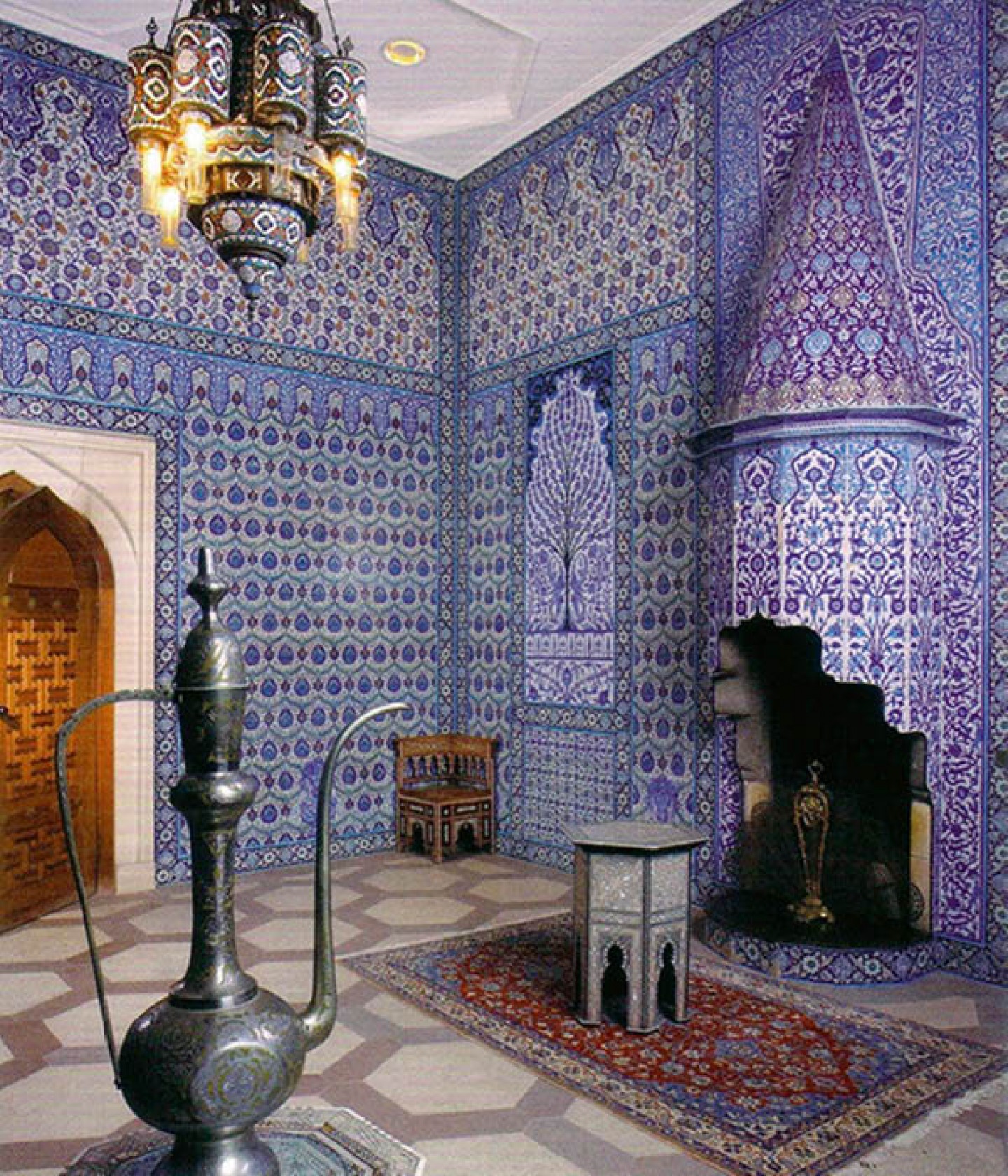
Today Sledmere House is lived in and looked after by 70-year-old Sir Tatton Sykes, the 8th Baronet and one of the great Yorkshire characters. Sir Tatton, a bachelor with a penchant for wearing cowboy boots, has stamped his own personality on the house, which gives it a unique and very personal feel.
The character of Sledmere is firmly established by the magnificent entrance hall, which was completely destroyed by the 1911 fire. It was reconstructed by the famous York architect Walter Brierley and makes the most impressive use of space, leading to the spectacular staircase. Look upwards and you see a Downton Abbey-esque gallery and a stunning dome, which take the breath away. No wonder this is one of the most popular wedding venues in East Yorkshire.
There are also a number of very individual bedrooms, including Red Bedroom, which features a mahogany four-poster bed that belongs to the George III period; the Orange Bedroom with a dressing table and stool were designed and made by David Linley Furniture; and the Chinese Bedroom with a Chinese-style Chippendale bed which originally came from Grimston Garth, another Yorkshire House designed by John Carr. The Turkish Room is also remarkable, designed for Sir Mark Sykes, 6th Baronet, by an Armenian artist, David Ohanessian, and is a copy of one of the Sultan' s apartments in Istanbul.
If you just explore the house, though, you don’t get the whole Sledmere experience. The Sykes influence and heritage permeates the whole village from the Roman Catholic Chapel to the Sledmere Monument. The chapel is the perfect place for a spot of quiet contemplation and prayer. Dedicated to Sir Mark Sykes, the 6th Baronet, it has the prettiest of ceilings painted by Tom Errington. The artwork took four years to complete and depicts the four winged creatures of the Evangelist in the Chancel and in the Nave, a variety of birds including a swan, heron, swallow and lapwing.
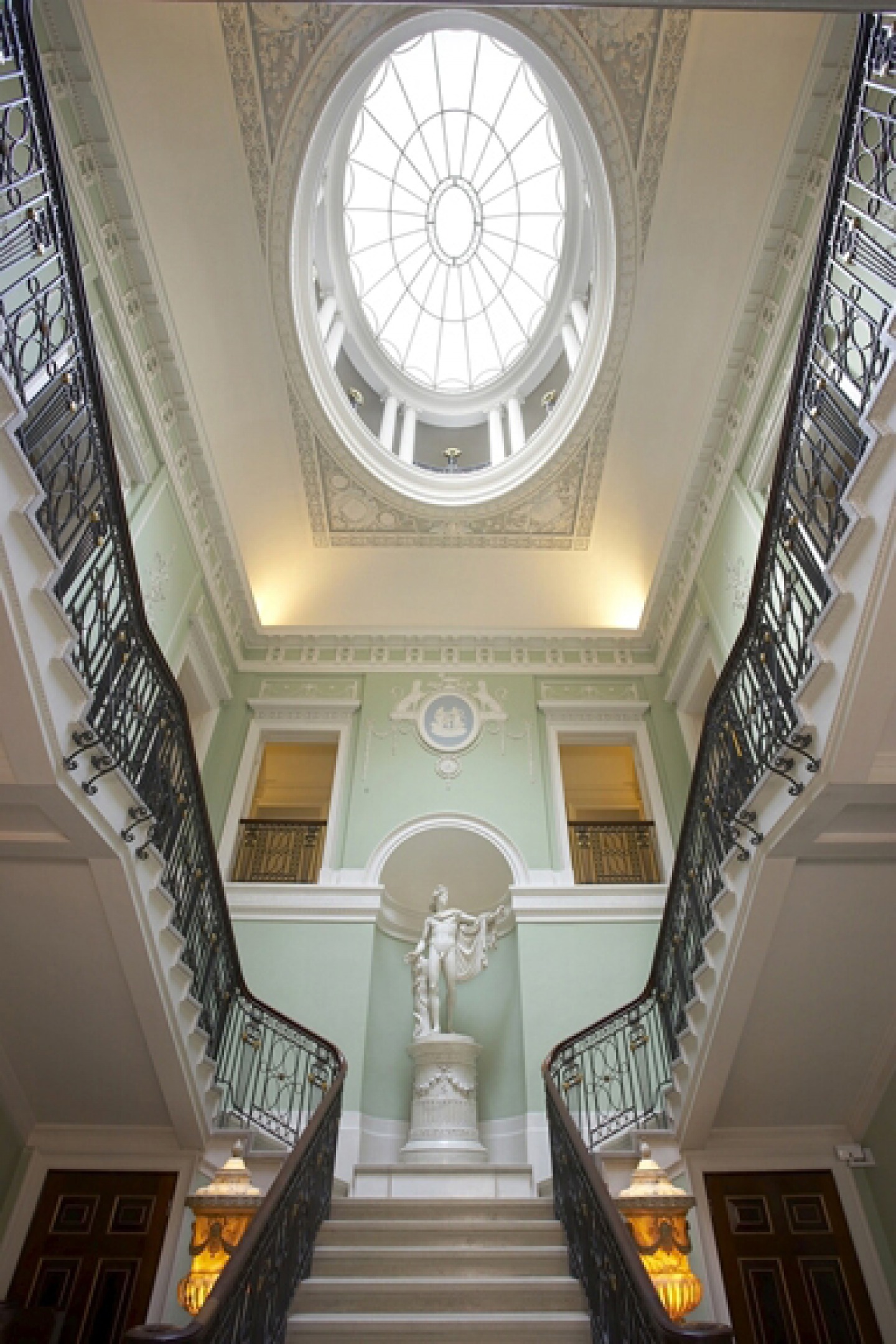
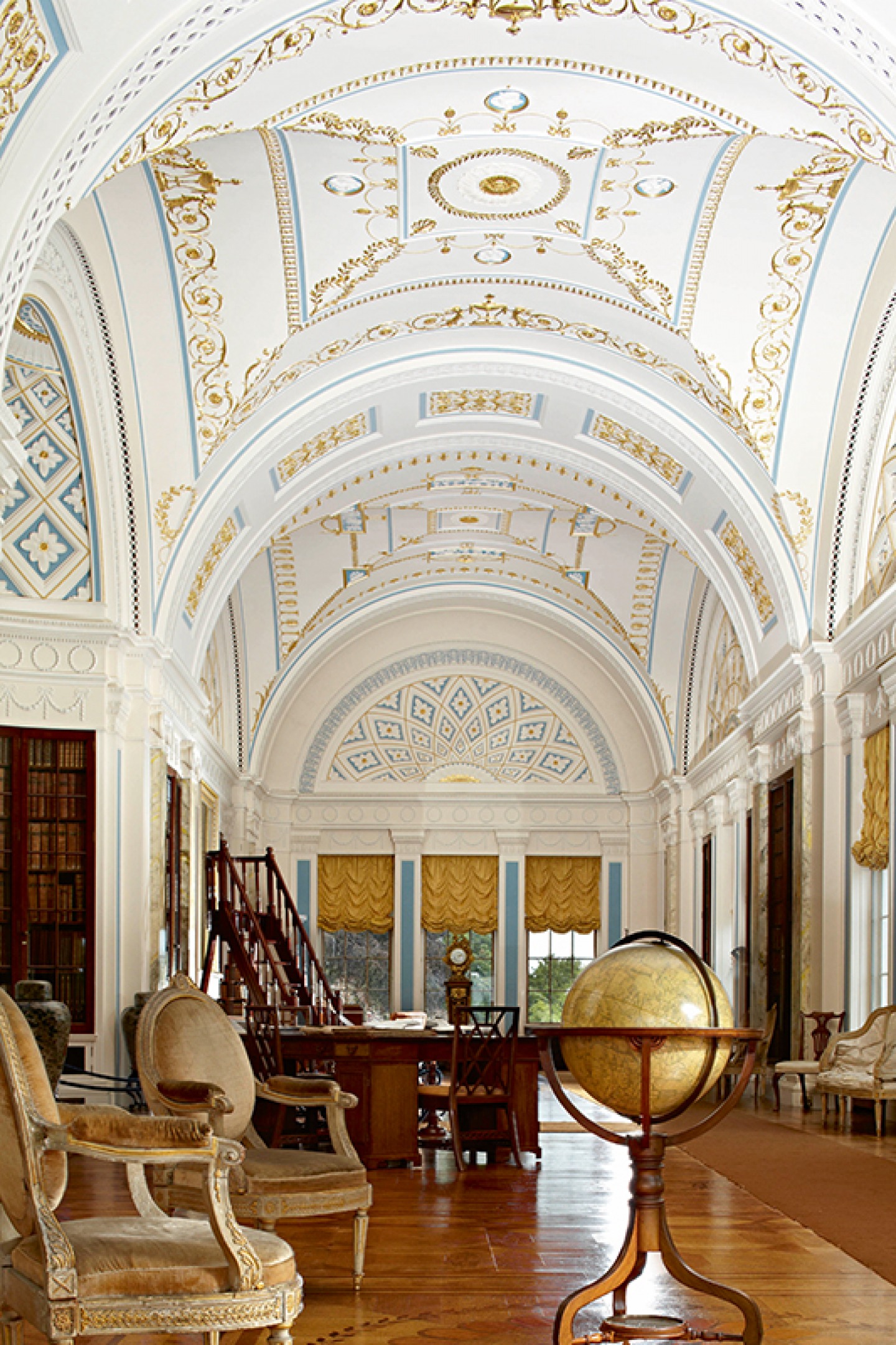
Sledmere Monument is a stone structure standing 120 feet high along the B1251 on Garton Hill and is visible for miles around. The monument was built in memory of the 4th Baronet, Sir Tatton Sykes, by his friends and neighbours in 1865. The inscription reads: ‘Erected to the memory of Sir Tatton Sykes Baronet by those who loved him as a friend and honoured him as a landlord.’ A heavy wooden door at the base of the monument leads to a spiral staircase up to a small chamber at the top. The views from here, as you can imagine, are stunning.
Meanwhile no account of Sledmere would be complete without mentioning its famous Stud, which was once one of the largest and most successful in England. Classic race triumphs include two Derby winners, Doncaster in 1873 and Spearmint in 1906; Three Oaks winners, Mimi (1891), Straitlace (1924) and Chatelaine (1934); and two St Leger winners, Scottish Union (1838) and Ridge Wood (1949).
Although Sledmere House is steeped in history, it has reinvented itself for the 21st century. It is open to the public from the end of March to the end of October, with a restaurant and gift shop, and is an extremely popular wedding location, as well as a venue for corporate events and craft fairs. The extensive gardens, with an 18th walled garden their crowning glory, complement the majesty of the house. The present Sir Tatton is the perfect custodian of Sledmere, making it accessible to the modern visitor, while preserving its unique character.
His younger brother Christopher, an accomplished author and historian, has helped in this task by writing an absorbing study of Sledmere and the Sykes family called The Big House. In it he says, ‘A house is more than bricks and mortar, it lives and breathes. Though I left Sledmere when I was 18, I feel attached to it as if by some invisible umbilical cord. For good or for bad, it inhabits my soul.’ I can think of no better epitaph for Sledmere, because the sensitive visitor will allow this extraordinary house to inhabit a little of bit of their souls too.




